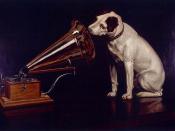Imagine not being able to reach a light switch, pick up your keys when you drop them, or open a cabinet door. Then imagine having a dog that could do all of that for you, and more.
What can a dog can do for a person who is disabled? A service dog can do many tasks, depending on the person's disability. A dog guide is the eyes for its blind handler, taking the handler around obstacles. A hearing dog alerts the handler to sounds, a Seizure Alert/Response dog responds when the handler has a seizure and a Mobility Assist Dog (also called a Service Dog), is the arms and legs for a disabled person. A psychiatric service dog keeps a person with an psychiatric disorder calm and able to be going to out in public.
There are laws that cover the right of a disabled person to be accompanied by an Assistance (or Service) dog.
The Americans with Disabilities Act defines a disability as with respect to an individual--
(A) a physical or mental impairment that substantially limits one or more of the major life activities of such individual;
(B) a record of such an impairment; or
(C) being regarded as having such an impairment.
And defines a Service Animal as:
Any animal individually trained to do work or perform tasks for the benefit of an individual with a disability. Tasks typically performed by service animals include guiding people with impaired vision, alerting individuals with impaired hearing to the presence of intruders or sounds, providing minimal protection or rescue work, pulling a wheelchair, or retrieving dropped items.
The role of the Assistance Dog is to assist the handler in a variety of ways. It is primarily a medical assistance aid and should be treated as such.
1. Do not...


